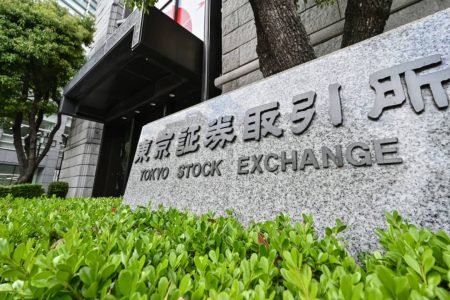This photo taken on May 2, 2024 shows a general view of the entrance to the Tokyo Stock Exchange (TSE) headquarters building in the Nihonbashi area of Tokyo.
Richard A. Brooks | Afp | Getty Images
Japanese stocks have been on a stellar run in 2024.
In February, the country’s benchmark Nikkei 225 smashed through its 1989 high.
This week, the Nikkei and the broad-based Topix surpassed previous records to hit fresh all-time closing highs on Thursday. The Topix notably breached a 34-year record set in December 1989.
How did the markets reach these level, especially for the Nikkei, which has scaled new peaks for the second time this year?
Earnings are the single driver to the current market rally, Jesper Koll, expert director at Tokyo-based financial services company Monex Group, told CNBC.

“Corporate Japan is now benefitting from decades of operational restructuring,” Koll said, adding that “breakeven points are at world record lows, so even minimal increases in top-line revenues feed explosive profit growth.”
He predicted earnings growth of 35% over the next two financial years — from April 2024 to March 2026 — as well as topline growth of 4% per year.
His forecasts stem from a prediction that Japanese companies will see domestic and global sales growth, and he explained that his prediction of a 4% sales growth is due to the wage hikes announced by Japan’s largest union on Thursday.
Japan’s largest union, commonly referred to as Rengo, announced that Japanese companies have delivered the largest wage hikes in 33 this year.
Monthly pay for union-backed workers will climb 5.1% on average this fiscal year ending March 2025. Rengo also said big firms with 300 or more union-backed employees raised wages by 5.19%, while smaller firms increased pay by 4.45%.
“You do not have a shunto [wage hike] of 5% and nominal sales rising less than 4%, for example,” he points out.
More importantly, Koll said, Japan is a “bastion of stability.” He pointed out that its monetary, fiscal and regulatory policies are stable and pro-growth, and this acts as an important support for financial markets.
When the Nikkei crossed the 40,000 mark in March, Koll told CNBC at that time that it was “perfectly reasonable” for the index to cross 55,000 points by the end of 2025.
Koll told CNBC this week: “I stand by my forecast — the Nikkei 225 is poised to climb to 55,000 before the end of next year.”
If his prediction comes true, it would be a 37% upside from the 40,000 mark.
Previously, Koll had predicted that the Nikkei would cross 40,000 in the twelve months from July 2023. He was later proven right when the index reached that level within eight months.
How sustainable is the rally?
However, the million dollar question will be: how long can this rally last?
A note by Nomura, published Thursday, said the gains on the Nikkei and Topix do not look appear sustainable. The analysts identified that these have caused by a short covering in futures.
There’s a…
Read More: Japan stock markets hit record high—Nikkei, Topix rally sustainable?

